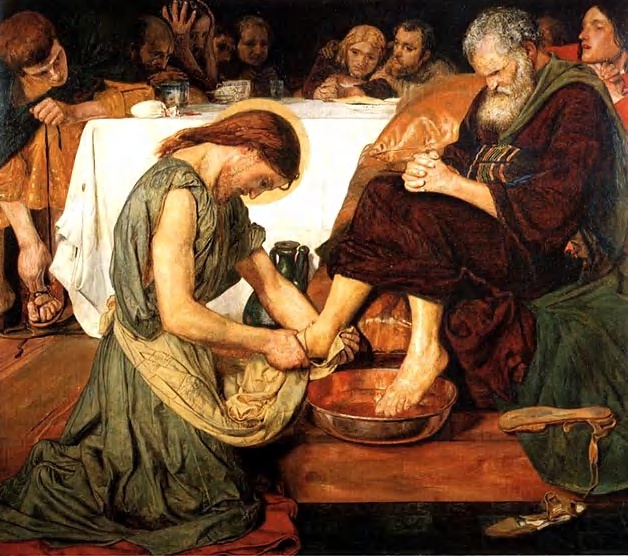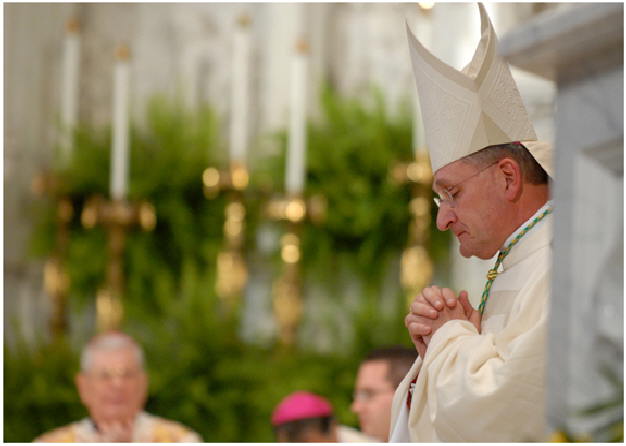Fr. Jim Martin poses that question at the America blog in light of the painting below. He writes:
The answer is in the look on St. Peter’s face, in this my favorite painting, by Ford Madox Brown of the scene from the Gospels that is remembered on Holy Thursday. Peter wants nothing to do with this. It is he, the disciple, who should be washing Jesus’s feet. And yet that is what we do every day: we let God wash us, care for us and love us, in ways that do not depend on whether we feel “worthy” or not.
In the First Week of the Spiritual Exercises of St. Ignatius Loyola, retreatants are asked first to consider all the many blessings that God has bestowed on him or her. After a few days of meditating on these blessings, sin comes to the fore. Why? Not because Christians are masochistic. Rather, as one spiritual director once said to me, “In the bright sunshine of God’s love, our shadows become more evident.” Thus, over time, the retreatant begins to understand himself as a “loved sinner.” “Depart from me, Lord,” says Peter in another context, “for I am a sinful man.” But Jesus does just the opposite–he stays with Peter and calls him to follow.
This is why this remarkable painting has always been so powerful for me. Not simply for the act of lovingkindness that the Son of God lavishes on Peter, but because of the look on the face of the other disciples, who don’t quite grasp that God’s love is freely given, not earned. And most especially for the expression on St. Peter’s face–in full recognition of his identity as a “loved sinner.”


